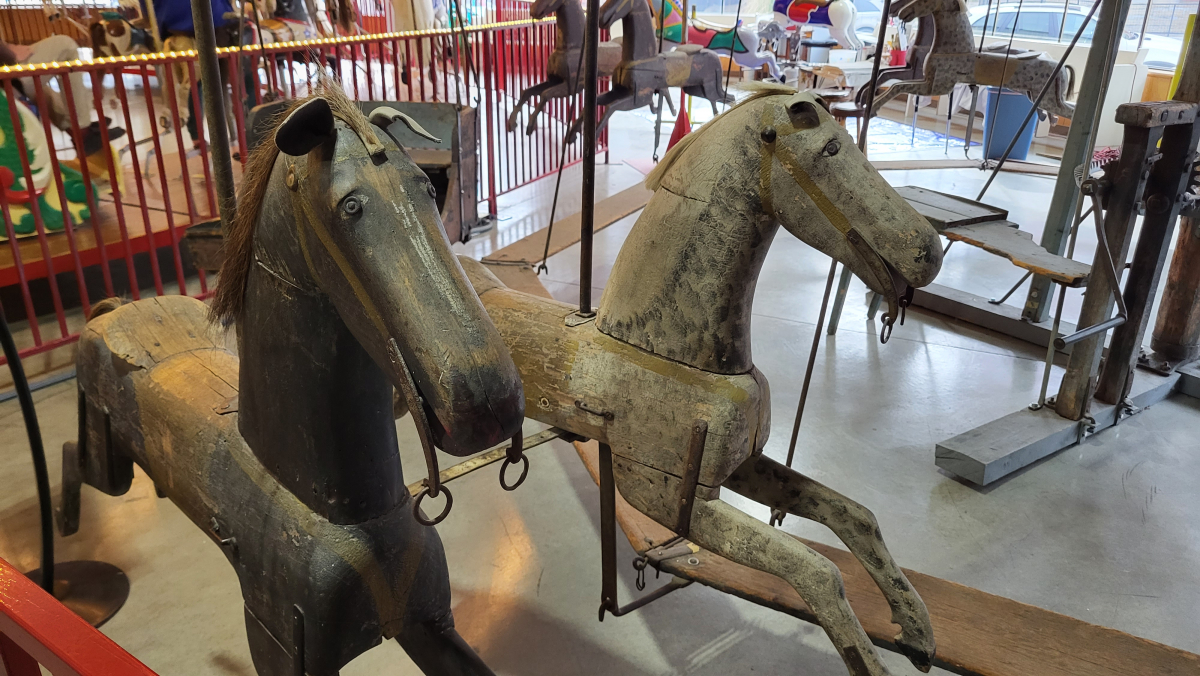An Antique Amusement: The Primitive Carousel

One of the most interesting attractions in the C.W. Parker Carousel Museum is one you can’t ride.
The primitive carousel, possibly the oldest operating wooden carousel in the world, is too delicate to handle a person’s weight. That’s partly due to its age – this carousel is believed to pre-date the Civil War, and was likely built sometime between 1850 and 1860. It was last used in Baltimore, Maryland, where it delighted children in a city park until 1920. It spent many years in a New York museum until it was purchased by the National Carousel Association and gifted to the C.W. Parker Museum in 1998.
No one knows who built the carousel; we only that it was made with care. Each horse is made of eight pieces of wood, including a hollow log making up the majority of its body. Metal rivets were used for eyes, leather scraps for ears and manes and tails are made of real horsehair. Rather than carving wood to create details on the horses, as was done on the C.W. Parker’s Carry-Us-All #118, this carousel’s details were painted on: the whites of each horse’s eyes, as well as stripes and spots and saddles whose colors have faded over time.
The primitive carousel is operated by two people who turn it by hand crank, rotating the device on a single ball bearing at the base of its center pole. Almost all of its equipment is original, save for a few bolts and the mudsills that once propped up the carousel. Though visitors can’t hop on and take the primitive carousel for a spin, museum personnel are happy to demonstrate how it works, giving you a glimpse into a by-gone era of carnival entertainment.


